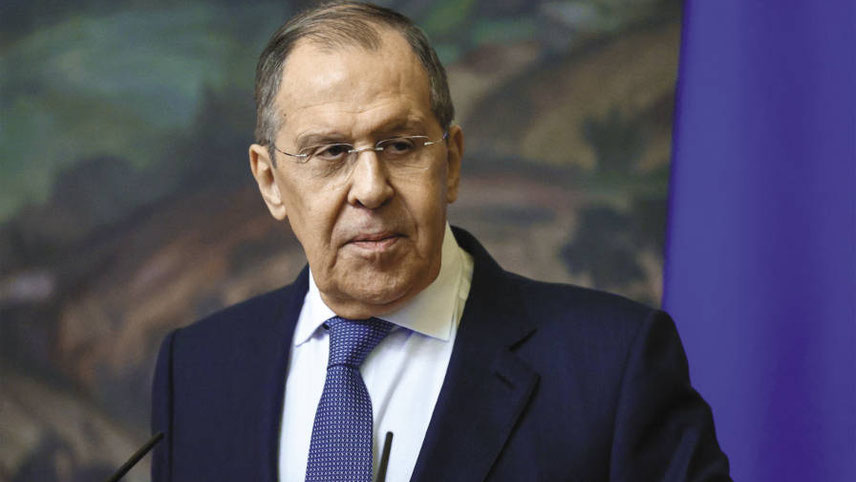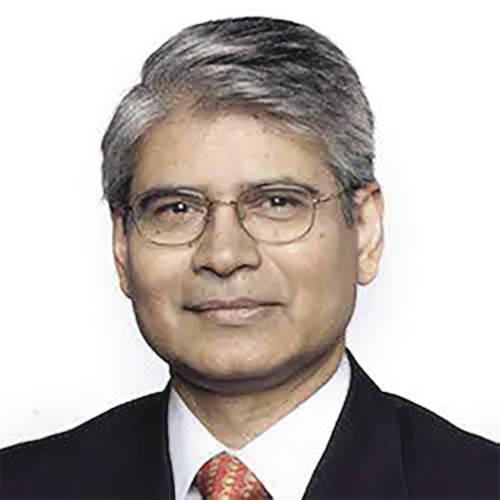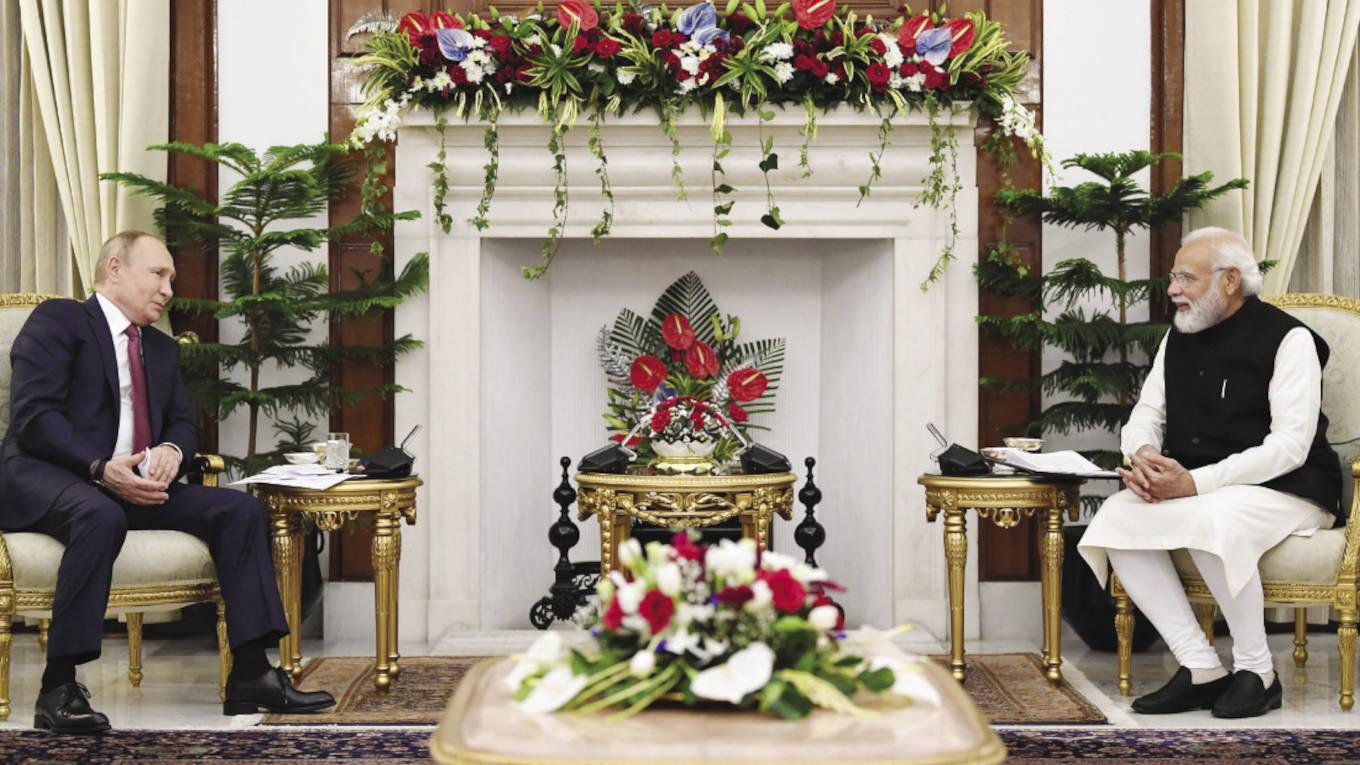-
India and Russia are now trying to come up with alternative solutions, like productively investing the rupees into joint ventures that produce goods that are of use to Russia or could be exported to other parts of the world. But that would be a long haul
Replicating Iran arrangement?
For New Delhi, the arrangement mirrored the mechanism India adopted to settle trade with Iran, where its oil payments to Tehran in rupees were used to supply non-sanctioned goods to the Islamic nation. UCO Bank, which handled India’s purchases of Iranian crude and managed billions of dollars of frozen payments, became the key bank facilitating the trade with sanctions-hit Russia in rupees. Incidentally, the lender posted record profit last year as interest income improved and global business expanded.
But, suddenly, the trade balance tilted in favour of Moscow, due to surging Russian oil imports by New Delhi. Russian oil companies and banks faced the prospect of being flooded with rupees. According to a calculation by Bloomberg, Russia was saddled with up to $1 billion worth of rupees each month that’s stuck in Indian banks.
The country is looking at $3 billion worth of rupees stuck in India every quarter. As observers pointed out, the ‘rupee trap’ was simply adding to the $147-billion Russian hoard stuck abroad. Early in May, Reuters reported that India and Russia have suspended efforts to settle bilateral trade in rupees, after months of negotiations failed to convince Moscow to keep rupees in its coffers.
Rupee’s drawbacks
Why did this happen? For one thing, the rupee is not fully convertible and India’s share of global exports of goods also is barely about 2 per cent. Compare this to the dollar, which accounts for 88 per cent of the turnover, followed by the euro (31 per cent), yen (17 per cent) and pound sterling (13 per cent).
These factors reduce the necessity for other countries to hold rupees. While most trade is in dollars, other currencies like the UAE dirham are increasingly being used. And it’s not like Russia can send the rupees back home either because India has restrictions over capital flows by foreign investors. India does not allow full capital account convertibility – its currency cannot be freely exchanged with other currencies. One cannot even take more than $250,000 out of India without RBI approval.
The reasons are a fear of short-term mass exodus of capital and massive exchange rate volatility. With India running significant current and capital account deficits, the fear of flight of capital in India is high. Indian bureaucrats point out in private that while we can push for the rupee’s acceptance in international trade, we have to do a lot more groundwork to make the rupee a global currency.
Sergei Lavrov, Russia’s Foreign Minister and Vladmir Putin’s top diplomatic fire-fighter, said in May that talks were underway with India to exchange billions of rupees that have accumulated in India. Attending the Shanghai Co-operation Organisation meeting in Goa, he said on the sidelines, “We need to use this money. But for this, these rupees must be transferred in another currency, and this is being discussed now.” Most of the cash that can’t yet be converted belongs to state-controlled Rosneft PJSC, which is Russia’s biggest crude exporter owning an almost 50 per cent stake in Nayara Energy, formerly Essar Oil Ltd.
-

We need to use this money. But for this, these rupees must be transferred in another currency, and this is being discussed now
SERGEI LAVROV, Russian Foreign Minister
Discussions on
The two countries are discussing various payment mechanisms, including investments in India’s capital markets by Russian entities. The RBI suggested that countries accumulating excess rupees from exports can put the funds in local securities including government bonds. To fix the trade imbalance Russia at one point wanted to expand supplies from India, such as machinery imports, components and equipment for road construction, chemicals and pharmaceuticals.
India tried to lure Russia into investing in infrastructure projects by offering equity stake. But Moscow preferred hard cash, and wanted the rupees to be converted and payment in Chinese yuan and the UAE dirham. With Russia-China commerce nudging past $200 billion, the Russians will be more than happy to get the Indian payment in yuan. It appears that, while holding the bait of cheap crude, the Russians were suddenly also playing hardball.
New Delhi was not comfortable allowing trade settlement in the yuan, given the tense relations between India and China due to their border disputes. In fact, the government had asked Indian banks and businesses to avoid using the yuan to pay for Russian imports. As for the option of using the UAE dirhams to pay for India’s Russian imports, experts say this might not offer a viable long-term solution, due to the sensitivity of that currency to Western sanctions.
India and Russia are now trying to come up with alternative solutions, like productively investing the rupees into joint ventures that produce goods that are of use to Russia or could be exported to other parts of the world. But that would be a long haul.
Brics currency
Ironically, these developments are taking place at a time when foreign ministers from the Brics countries – Brazil, Russia, India, China and South Africa – met recently in Cape Town along with ministers from other countries, including Iran, Egypt, the United Arab Emirates and Saudi Arabia. On the agenda was the possibility of expanding membership of the group to include these countries.
But the main topic of discussion was the creation of a common Brics currency. The Shanghai-based New Development Bank, rather than the International Monetary Fund, was tasked with finding ideas for how to achieve this. It was hailed by pundits as a major step towards challenging the hegemony of the dollar.
Russia, Brazil and China are already using their own currencies for bilateral trade payment settlement. However, such a payments system runs into problems once imbalances arise, as has been the case with Russia and India. Russia sitting on billions of Indian rupees, which it cannot use, is a case in point. Hence Brics countries are working on a solution to the perennial problem: how to move from bilateral to multilateral clearing and to a common currency.
Creating a common currency is not a new idea. Most experts know that, if such a currency is ever achieved, it will not replace the dollar; it would exist in addition to the established dollar-based global monetary system. It will be a regional initiative, rather like the euro. In the case of Europe, the process from bilateral settlements to a common currency took close to 50 years.
-
The demise of the dollar as the world’s leading reserve and trade currency is greatly exaggerated
Institutional template
The main institutional achievements were the establishment in 1950 of the European Payments Union (EPU), the provision of funds from the US Treasury to cover liquidity shortages as all settlements were in gold or dollar, the establishment of the European currency unit (ECU) clearing system and the introduction of the euro – first as a clearing currency and later for general public use.
Even at that late stage, proponents of the euro were accused of leapfrogging political agreement by member states. The Bank for International Settlements acted as clearing agent for the EPU as well as for the ECU.
That’s where it gets interesting and we may have a situation which will test India’s skills and resolve. Though S. Jaishankar, India’s foreign minister, was an active participant at the recent Brics meeting in South Africa, India has said little about a common Brics currency so far.
A Brics common currency comes with a heavy baggage. China’s economy dominates Brics, it alone constitutes 17.6 per cent of global GDP. At 7 per cent, India is at a distant second place. “Any brand new currency would have no inherent value on its own, no demand and, in turn, no supply, since nobody would have started using it yet,” says a former official of the ministry of external affairs. “Therefore, such an infant currency would have to be initially linked with an existing one of a big, strong economy. Within Brics, that would be China.”
Old shibboleths
Asoke Mukerji, former UN ambassador and key negotiator during crucial years at the WTO, points out that keenness to drop the dollar and the euro is largely due to unilateral Western economic sanctions on countries like Russia and Iran, and their ‘third-party’ impact on other countries still conducting trade in those two powerful currencies.
However, he adds that trading in local currencies like the yuan or rouble would also ‘limit the canvas’ of international trade, most of all with the US. “No company would want to jeopardise that,” he says.
The catch for India lies in the fact that China is not merely a benign trading partner. It is an aggressive, contentious neighbour which lays claims to Indian territory. With the exception of Russia (which finalised a border agreement with China in 1991), none of the other Brics countries share an international border with the Asian giant.
None have gone to war against the PLA. And complicating this already dangerous face-off along the length of the 3,700-km shared border is the ceding of Indian territory to China by none other than China’s close ally Pakistan.
The flip side of the argument is that all Brics member countries have China as their main trading partner. Pegging to the renminbi and aligning their bilateral exchange rates could be the first major step. At the same time, a mechanism would have to be set up to provide credit in renminbi to countries that run trade deficits, such as India and South Africa. An organisation similar to the EPU would have to be established.
China would have to shoulder the burden to keep such a clearing system afloat. This means setting up the mechanism and institutions, providing sufficient funds to support a liquidity shortfall and providing a reserve facility to deposit surplus funds. In addition, it would need to remove obstacles to the fungibility of the renminbi as surplus supply of other currencies should be freely converted into renminbi and used by other countries, eliminating the problem being faced by Russia.
-

Trading in local currencies like the yuan or rouble would limit the canvas of international trade, most of all with the United States. No company would want to jeopardise that
ASOKE MUKERJI, Former UN ambassador and ex-WTO negotiator
Impact on China’s system
If it happens, it will boost the internationalisation of the renminbi. Simultaneously, it may increase the pressure on China to liberalise its financial account. Both have major ramifications for the country’s domestic monetary policy. China is already coming to terms with the fallout from using its currency swap agreements to prop up countries in payments difficulties.
So far, China is a long way from the benign neglect, which the US adopted, to help the Europeans establish their own multilateral clearing system and currency.
The demise of the dollar as the world’s leading reserve and trade currency is greatly exaggerated. Its dominant status, unchallenged since the end of the World War II, is unlikely to end any time soon. But there is no denying that changes in the world’s financial architecture and trading patterns are afoot. All these will pose significant challenges to the once-almighty greenback in the years and decades ahead.
Following in the footsteps of Russia and Iran, Brazil has reached a yuan-based trade deal with China that will allow its exporters to be paid in the Chinese currency. The payment arrangement will especially facilitate the country’s major exports to China such as iron ore, soybeans and beef. Trade settlement in yuan will increasingly be the norm among the BRICS bloc of Brazil, China, Russia, India and South Africa.
Last month, France’s TotalEnergies completed its first deal in yuan with the state-owned China National Offshore Oil Corporation involving 65,000 tonnes of LNG from the United Arab Emirates. Riyadh and Beijing are working out yuan payments for oil. And, thanks to Western sanctions, the yuan has replaced the US dollar as the most traded currency in Russia.
The so-called de-dollarisation is often explained in geopolitical terms, as those countries facing rising tensions with the US and the West want to seek out alternative payment systems and assets to escape the threat of US sanctions and economic warfare. But much of it is also basic economics. The US dollar has risen by about 15 per cent to a two-decade high against major currencies.
All Asian currencies have fallen vis-à-vis the greenback, with the yen dropping by 20 per cent since the start of 2022, while the yuan weakened by 8 per cent. That has made dollar-denominated trade unnecessarily expensive, leading many governments to realise that the use of the greenback is counterproductive under such conditions.
It’s no accident that member states of the Association of Southeast Asian Nations (Asean), which have maintained good relations with the US, have been building up bilateral currency swaps with China to promote the use of local currencies in regional trade and investment. That is an entirely natural economic outcome of the increasingly close interdependence of their rising economies.
The yuan will not be supplanting the US dollar any time soon. However, as the current cycle of rate increases continues to buoy the dollar’s value, more countries will be forced to move away from US dollar-denominated trade to look for more economical currencies for settlement.
Given the significance of China as the major trading partner to a majority of countries around the world, the yuan, despite its many limitations, will be increasingly important in bilateral trade. India will have to prepare for such a situation and recalibrate its geo-politics.
-
Any brand new currency would have no inherent value on its own, no demand and, in turn, no supply, since nobody would have started using it yet
Rupee idea premature?
As for the move to internationalise the rupee the idea is not new. In the 1960s, the currency was regarded as the official currency of countries like Kuwait, Bahrain, Qatar, the UAE (then the Trucial States) and even Malaysia. Called the Gulf rupee, it was, however, slowly replaced by local currencies. For the Indian currency to become a global economy, it would have to have global acceptance.
While it may be a noble idea in the long run, some believe that trying to make the rupee an international trade and settlement currency is nothing short of a wild goose chase at this juncture.
For such an eventuality to happen, “India needs to become a much larger economy in terms of its GDP and international trade integration,” argues Subhash Chandra Garg, former Union finance secretary. “India also needs to move further on rupee convertibility. The recent clumsy decisions to impose tax collection at source (TCS) on international remittances and credit card transactions move the clock backwards. China has grown its economy massively.
The Chinese yuan was accepted as one of the five international currencies by the International Monetary Fund (IMF) in 2015 – and, still, it is struggling to be accepted as a currency for international trade. India is far behind. Let us focus on the hard task of building the economy first, instead of squandering time and energy on this wild goose chase.”
-
Let us focus on the hard task of building the economy first, instead of squandering time and energy on this wild goose chase
The top buyers
India and China continued to be top users of heavily discounted Russian crude oil, buying as much as 80 per cent of the oil that Moscow exported in May. According to the International Energy Agency (IEA), India has increased purchases from almost nothing to close to 2 million barrels per day, while China has raised liftings by 500,000 barrels per day to 2.2 million barrels per day. India’s imports of Russian oil were 14 per cent higher than in April and a fresh record high for Russian crude flows into the country.
The incentive to buy cheap Russian crude remains underpinned by deep discounts. Russia’s main crude export grade Urals discount to Dated Brent averaged $26 per barrel in the first three weeks of May. This compared with $3.70 a barrel in January 2022.
With Russia’s formerly main crude export markets in Europe banning import and G7 imposing shipping restrictions, more than 90 per cent of Russian seaborne crude headed to Asia, up from pre-war levels of 34 per cent.
Since early 2023, increasing exports of refined petroleum products from India, the Middle East and China have moved west to European and G7 buyers in the Atlantic Basin to offset Russian cargoes now moving to buyers East of Suez (300,000 barrels per day or roughly one-third of Russian exports), according to IEA.




































